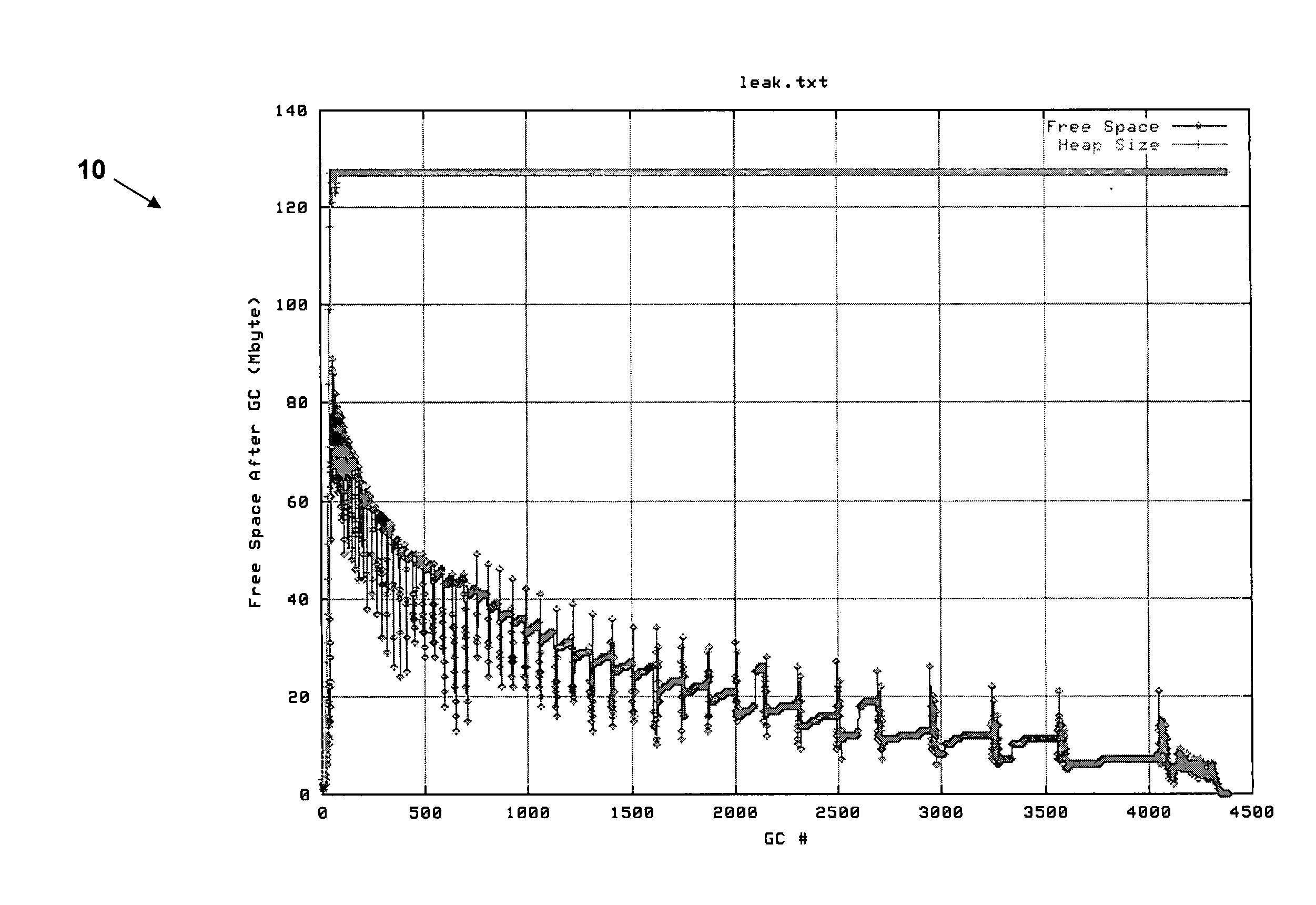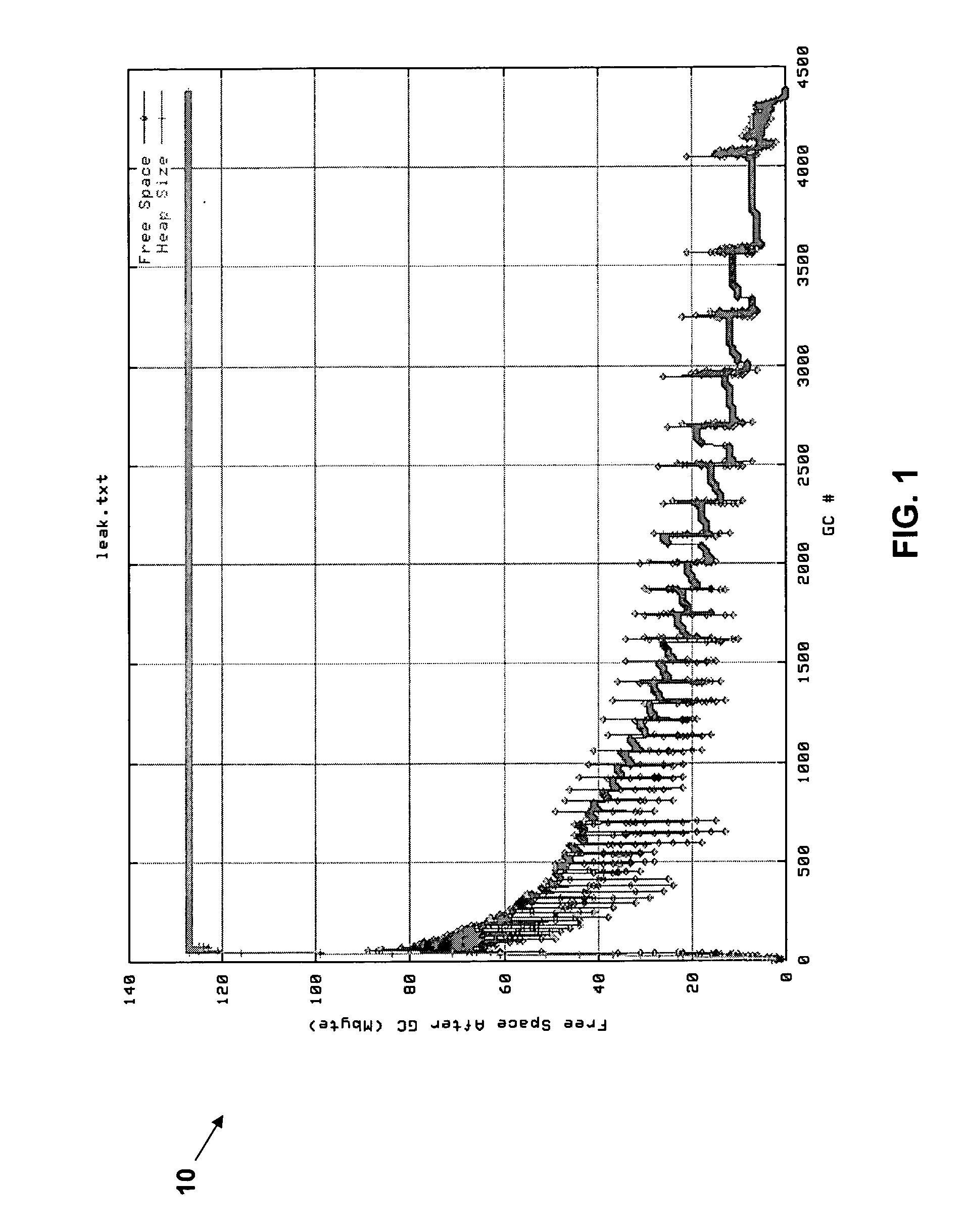Method, system, and computer program product for light weight memory leak detection
a memory leak detection and memory technology, applied in error detection/correction, data processing applications, instruments, etc., can solve problems such as poor performance, processing intensive, and high cost of solutions
- Summary
- Abstract
- Description
- Claims
- Application Information
AI Technical Summary
Benefits of technology
Problems solved by technology
Method used
Image
Examples
Embodiment Construction
[0021] A general flow diagram 20 of a light weight memory leak detection process in accordance with an embodiment of the present invention is depicted in FIG. 2. The flow diagram 20 is described with reference to the graphic representation 30 depicted in FIG. 3.
[0022] In step S1, raw free memory statistics 32 are obtained for an interval of time while an application is running. The raw free memory statistics 32 can comprise, for example, total free memory, total available memory, etc. Such raw free memory statistics 32 are available by default in the Java Virtual Machine (JVM) in which the application is running. The raw free memory statistics 32 can be obtained, for example, using known Java application programming interface (API) calls. In step S2, the raw free memory statistics 32 obtained in step S1 are analyzed (e.g., using standard deviation or other techniques) to determine when heap activity representative of garbage collection (e.g., satisfying a predetermined level of var...
PUM
 Login to View More
Login to View More Abstract
Description
Claims
Application Information
 Login to View More
Login to View More - R&D
- Intellectual Property
- Life Sciences
- Materials
- Tech Scout
- Unparalleled Data Quality
- Higher Quality Content
- 60% Fewer Hallucinations
Browse by: Latest US Patents, China's latest patents, Technical Efficacy Thesaurus, Application Domain, Technology Topic, Popular Technical Reports.
© 2025 PatSnap. All rights reserved.Legal|Privacy policy|Modern Slavery Act Transparency Statement|Sitemap|About US| Contact US: help@patsnap.com



